Although I no longer take interior design clients, I did for 24 years, counting the years working for others. And oh man. The fabric mistakes!
No, wait. Fabric mistakes is an understatement. It should be:
HORRIFIC DECORATING NIGHTMARES!
It all begins quite innocently; like this:
One day, while sitting at the hair salon getting your roots taken care of, nonchalantly flipping through decorating magazines, the attendant comes to clean up the floor by your chair.
But, instead of sweeping up hair, she’s actually cleaning up the puddle made from your drool as you swoon over one beautiful room after another.
And because you are high on hair color fumes, you start fantasizing about what it would be like to create beautiful rooms like this— for a living.
Fast forward a little. After reading a self-help book, you learn that if you can dream it, you can do it.
You fall for it.
Subsequently, tens of thousands of dollars go towards an interior design education. Upon graduating, you have a portfolio of beautiful projects. Now, it’s time to get a resale certificate, become a sub-chapter S corporation, and open up for business.
WAIT!!!
I need to say something before you metaphorically jump out of a plane without a parachute. I hope this doesn’t sound condescending.
Oh, whatever. I NEED to be condescending.
Do you have any idea the deep doo-doo you’re about to step in?
Please look at me when I’m talking to you!
Thank you.
Now that I have your undivided attention, I will let you in on a little secret. (which some of you already know)
Interior design schools do not prepare their students for real-life interior design.
It’s all pretend, and they gloss over what can go wrong or omit it entirely.
Why?
I guess they don’t want everyone dropping out. haha.
So, now what? Well, besides getting a copy of Laurel’s Rolodex, The Paint and Palette Collection. and 333 Rules and Tips You Need to Know
I highly recommend that if embarking on a new career in interior design that it’s imperative to work for someone else.
I would do this for a minimum of two years. Please. That is, unless you’re okay with losing more money than you’re earning.
Here’s why.
There is just too much that can go wrong; this business is fraught with more landmines than exist in the entire world!
Think I’m exaggerating for dramatic effect?
I only wish.
Fortunately, not all of these things happened to me, just the ones with an. *
Those with *** took me years to recover from.
Please learn from these fabric mistakes, not just boo-boos but depressingly frightening nightmares. Like I always say: “I’ve made plenty of mistakes; I just try not to make the same one twice!”
And these are only the fabric mistakes. Therefore, please listen up. Designer fabric is expensive, and if you must have something remade, it will hurt. I mean, it’s going to cost a lot to have it redone and at your expense.
For some of my favorite designer fabrics, click here.
What if it’s the workroom’s fault. Shouldn’t they pay for it? Sure, if they admit the mistake as their own. But, this is mistake number one. Put EVERYTHING in writing, carefully spelled out. If you don’t, I can guarantee that they will say that you told them x even if you are 100% positive that you said z.
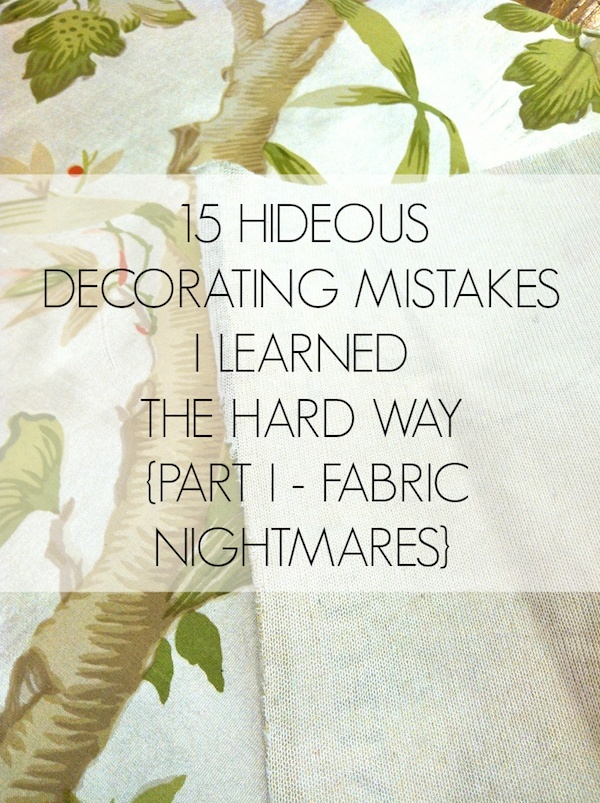
15 Fabric Mistakes
You need X amount of fabric and place an order for it.
What’s so tricky about that, Laurel?
- Nothing unless the fabric has been discontinued.
- Or it’s on backorder for six months, and the entire room revolves around it. And there’s only one fabric in the entire universe that’s like that one.
But folks, that’s just the tip of the needle and thread.
- You order one chair, and then the client decides to get another identical chair six months later. The problem could very well be that the dye lots don’t match.
Oops, I hope you got a CFA (Cutting For Approval) of the current dye lot (assuming that there’s no stock left of the dye lot you used previously.) That is a CFA BEFORE you sent it to the workroom for the new chair.
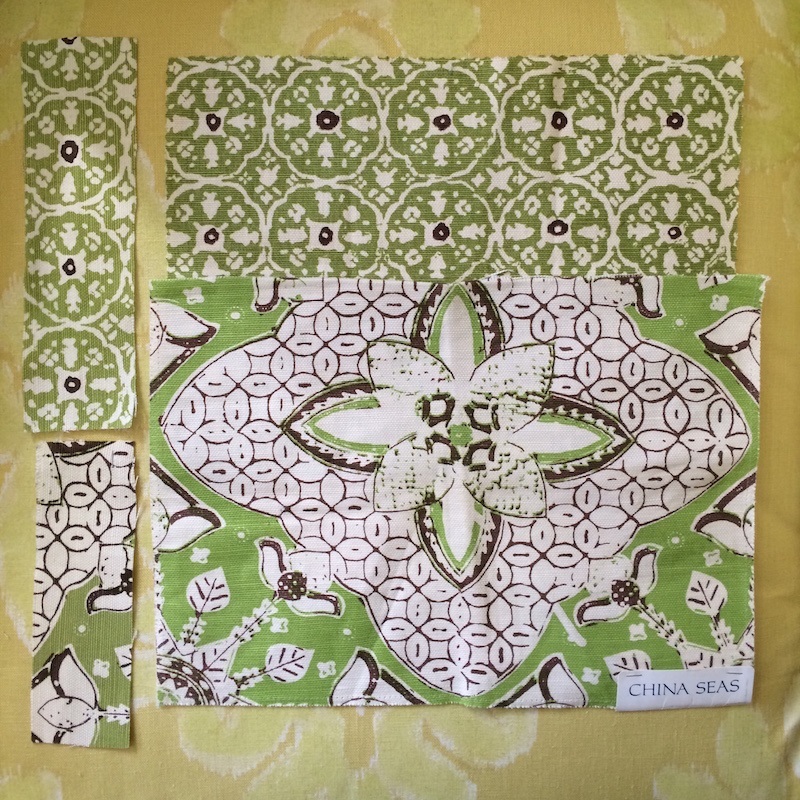
Here’s a good example. Several years ago, a job we did had these two fabrics in one room.
Here, you can see the finished Roman Shade from the bottom sample fabric.
The large pieces are the original samples. The CFAs are on the left. And, as you can see, they are different from the original dye lot, especially the fabric on the bottom. In our case, it turned out to be a good thing.
However, imagine that fabric on the two different dye-lots on identical chairs, next to each other.
You get a panicked email from your client that the chairs don’t match. After assuring her that you’re on the task to correct this, you pour yourself a glass of wine.
Then, a call is made to the fabric vendor. Unfortunately, there’s no more stock left of the second fabric. And, there’s a back-order of the new stock.
Sucks, doesn’t it?
Unfortunately, your poor client will have to live with mismatched chairs for at least three months.
And, YOU will have to pay for 16 yards of fabric and the cost to have BOTH chairs picked up, reupholstered, and re-delivered.
There goes the ski vacation.
If you are doing multiples of anything, it is safest to order them all simultaneously. And if dye lots/color matching matters, you must get the CFA!
- The draperies made of a $240 English hand-screened print for six windows (72 yards) were the correct pattern.However, the company sent out the wrong colorway. Maybe someone read the numbers wrong.
Oh man, this did not happen to me, but it’s a true story. THIRTY THOUSAND DOLLAR MISTAKE!!! And, this was circa 1994. Now it would be at least $50,000.000!
In this case, not only did they not get a CFA, they did not put a sample and a clear description on their purchase order for the workroom.
Unless you can afford to eat a mistake or live with it, please get the cutting for approval and ensure that your workroom knows what the fabric should look like!
- the upholstered furniture arrived; only the material was put on inside out!*
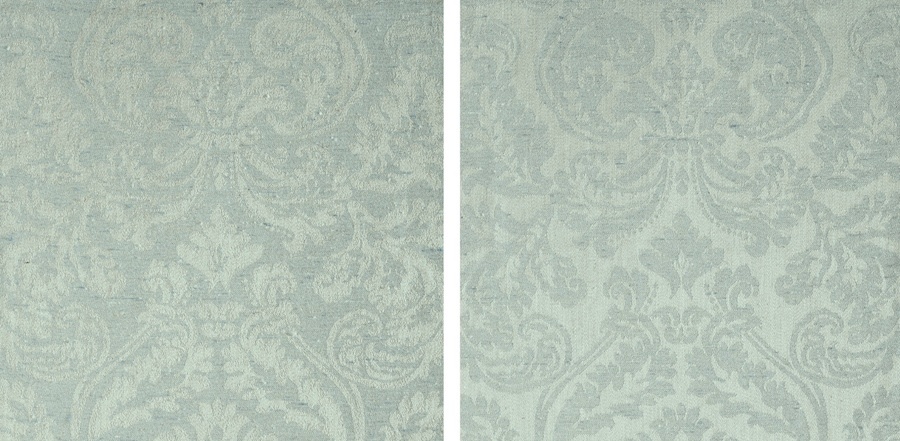
Yes, this happened to me 16 years ago in a similar fabric. The fabric was sent to be knit-backed, and the fabricators put the backing on the wrong side! Fortunately, it still looked lovely. In fact, I liked it better, and the client didn’t notice. Phew! That was a close call!
- The fabric on the custom club chairs started unraveling only days after the client received it*

That one was a real eye-opener. The fabric was a heavy-duty tapestry.
Yes, but it was also a REP WEAVE. The fabric above shows what a rep weave looks like. You see it a lot in placemats, but ours was finer. Here’s the deal. When it is cut on the diagonal for the bias welt, it starts unraveling like mad. Who knew?
I contacted Kravet and asked them why there wasn’t some information warning that this fabric required backing for upholstery. Here’s what they said.
“Well, Ma’am, we don’t know what you’re using the fabric for.”
Seriously? Like I was using it to make two dog beds or something?
I said. “I used it for upholstery for two club chairs; is there a problem with that?”
After some cajoling, I got them to cover the cost of the 16 yards of fabric I needed to reorder.
However, the cost of the reupholstery was mine. (Yes, the upholsterer lost his gig with me.) There are remedies he could’ve taken to see that the welting didn’t unravel, but I didn’t know that at the time. And, he should’ve accepted the blame as I was not there to see what was going on. He knew.
He could’ve put fabric glue on the edges of the seams, and that would’ve stopped the unraveling.
The other solution to prevent unraveling that I highly recommend is to send the fabric out to a place that does knit-backing. My favorite is Schneider-Banks (SBI) in Texas. I also use knit-backing when I want to upholster with materials that are less stable and/or fragile, like linens and silks.
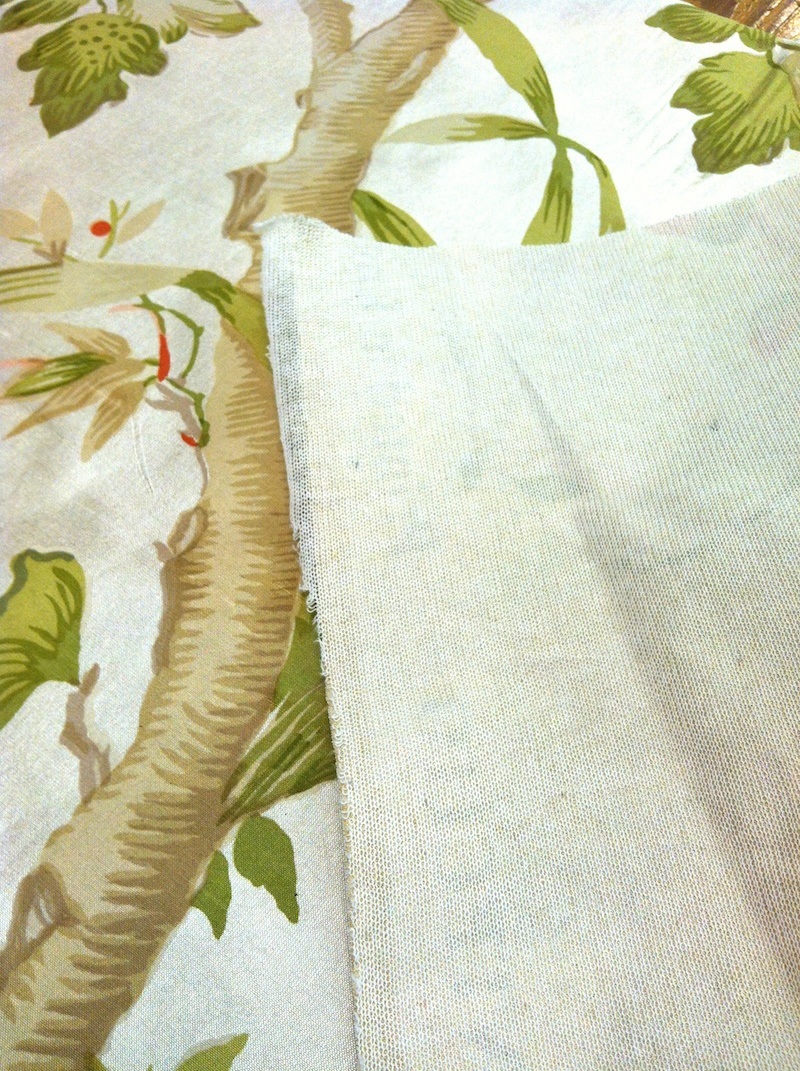
Above is what the knit-backing looks like. It gets heat applied to the back of the fabric. All linens, chenilles, and silks that are being used for upholstery must have a backing like this or something similar on them. Sometimes the material already comes with a backing, but if not, please remember to send it out!
- You forgot to check the pattern repeat and didn’t send enough fabric to the manufacturer. When you went to order more, it was on back-order for five months.
My old boss used to say this all of the time:
“This business isn’t for the faint of heart.”
What’s the solution? Well, if it’s a chair or sofa, sometimes they include the arm covers and matching throw pillows. I never do the matching pillows, so, between the two pillows and arm covers, that is a couple of yards.
- your workroom called you up because the French toile is only 36″ wide, and you need to order another 8 yards of fabric that your client wasn’t expecting to pay for.*
98% of the time, designer fabrics are 54″ wide or thereabout.
I had never heard of 36″-wide fabric. But this was a Pierre Frey fabric, imported from France. Alas, I had to get another seven yards of fabric. Of course, I could not charge my clients for the additional yardage because they weren’t expecting it. It is my responsibility to know what I’m ordering. I just forgot to double-check that one. It had never come up before.
- the silk on the living room chaise split open in only a few months
Knit-backing a fragile fabric makes it far more durable. I’ve done this many times with great success! Please read about knit-backing above.
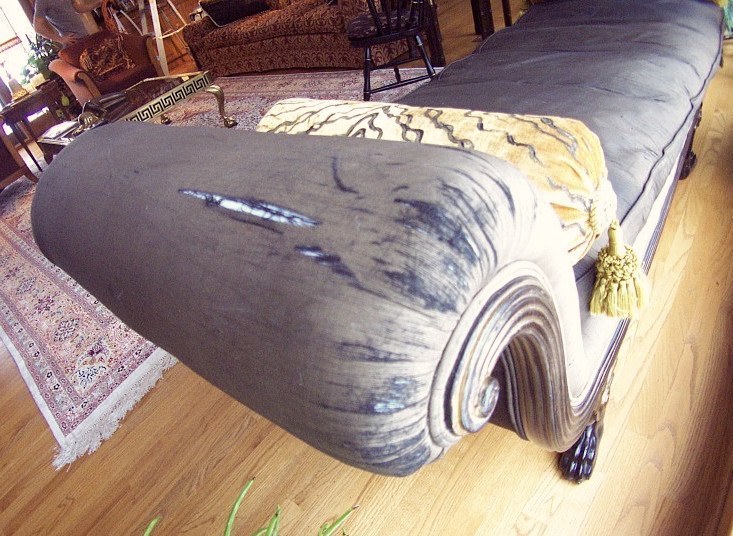
- and it went from rich indigo to some sort of weird wimpy lilac color
Blue is often a color that we call “fugitive.” It fades when exposed to the sun and then transforms into some weird color and not evenly either!
- the silk drapes started rotting away
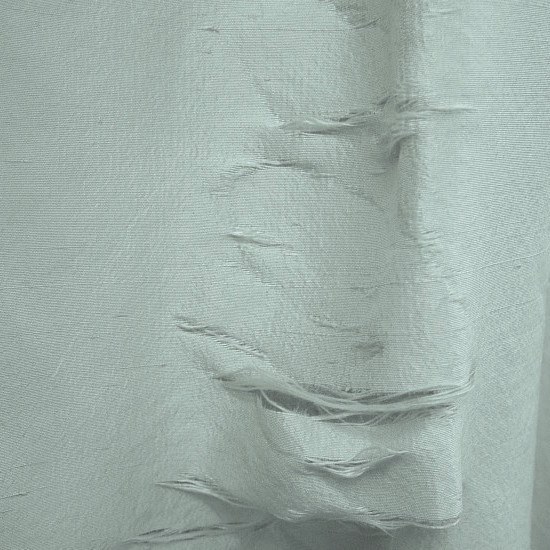
Silk is a lovely fabric. For drapes, they must always be lined and INTERLINED. No exceptions! However, if you have a strongly lit south-facing room, I would avoid silk altogether for the upholstery unless it’s knit-backed. See above.
In addition, please see to it that your windows are UV protected. There is a film that can be professionally applied. I’ve had clients who’ve had this done with terrific results. The sun can wreak havoc with all fabrics, leather, and wood!
the Roman shades made of expensive semi-sheer wool shrunk within days after installation!***
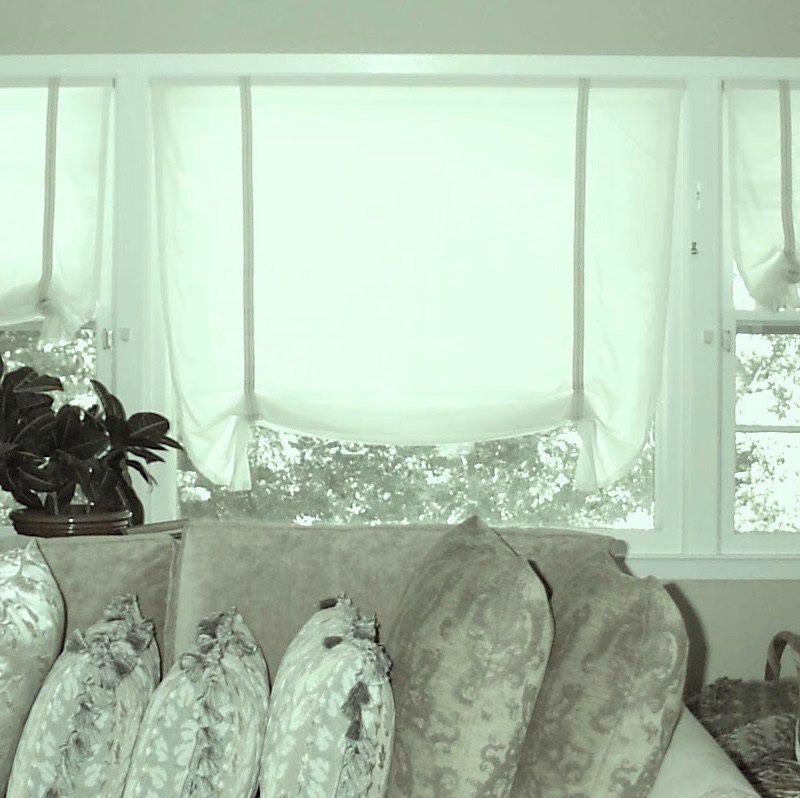
I’m not going to say too much about this one because the entire job was one of the most soul-sucking experiences of my life! And I do not say that lightly. In fact, I very much wanted to quit the business after she had worked her unique brand of crazy on me.
That’s how bad it was.
She was nice enough– in the beginning. But, after a few weeks, the client began to show her true colors. I went Whoa! and realized that I better get out before she got really nutso on me.
Therefore, I did my level best to get her to fire me.
I should’ve tried harder.
I think that she sprayed water on the Roman Shades. Or the cleaning lady did. They were perfect when we hung them two weeks earlier. Well, as perfect as could be on those problematic windows. I wanted to do drapes, but one window butted up against the kitchen door, and it would’ve been hazardous to do drapes.
However, they ARE wool. Buyer beware!
Wool is a stunning fabric that drapes like Marilyn Monroe cooing happy birthday all over her microphone.
Just yummy. But, again, I advise against wool; possible shrinkage and moths too. Oh, and wool, like silk, can rot in south-facing windows. I used the same fabric for my bedroom, and after a few years, that’s what happened.
- the inside mount Roman shades were not wide enough*
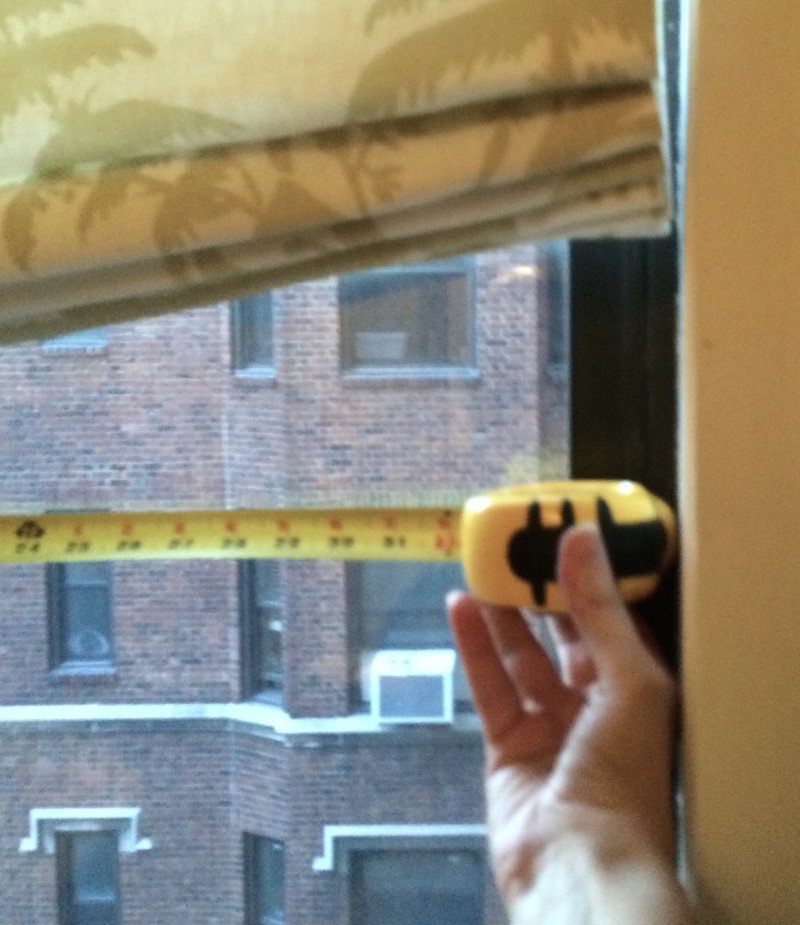
Forgive the blurry photo. It’s a selfie, and I had all I could do to hold the tape measure level and get a straight shot!
Okay, we have ALL made this mistake, and it’s incredibly embarrassing when we do.
The proper way to measure for an inside mount shade is to take the tape measure from one side of the window and include the entire tape measure casing. Most tapes either come in 3″ or 2″ widths. Please avoid the weird one that’s 2-7/8th or whatever. The issue, of course, is to remember to add in the width of the tape measure.
Can I tell you the number of times I went BACK to measure a client’s windows, just to make sure?
Also, if you’re a designer and measuring, take notes, e.g., it’s an inside mount, but the clearance is shallow, so the board will need to go in the other direction.
Sometimes, several weeks went by between measuring and ordering the window treatments. Believe me, if you don’t write it down, you’ll forget.
- the costly fabric on the expensive Donghia chair looked like a Chia Pet only weeks after being delivered*
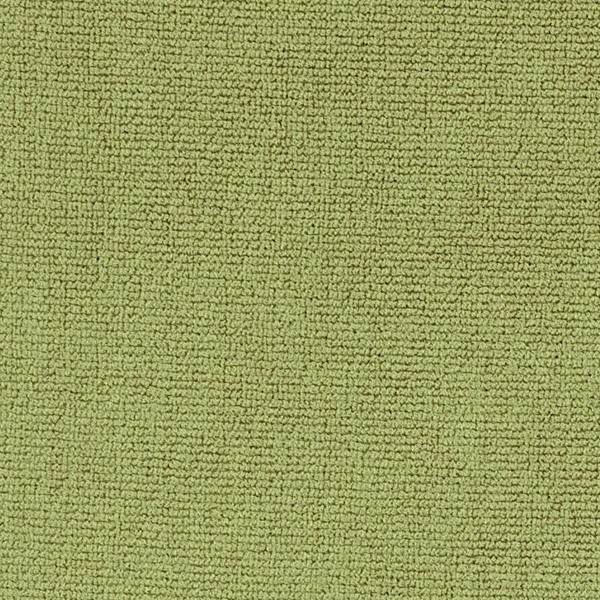
Oh, man… This happened 22 years ago to one of my most excellent clients. I’ve helped her with two gorgeous homes. What happened? The fabric is called an EPINGLE. Pronounced, EP IN GLAY, if you don’t already know that. It looks something like the rep weave, except what it actually is, is tiny loops.
It’s the crack cocaine of fabrics for a cat.
Sure, go ahead and laugh.
You’ll stop laughing when you get the bill for $2,000.00 to reupholster the chair with the $160.00/yd fabric (net price)
But, this is how lovely this client is.
She lived with her fuzzy chair until she moved homes nine years later, and we reupholstered it in something far more pet-proof. Believe me when I tell you that she could’ve had 100 of these chairs reupholstered, and it wouldn’t have made even a tiny dent in their bank account. However, it just wasn’t that important to her.
This next one, however, I wasn’t so lucky. Although, also a lovely client!
- The brand-new custom leather loveseats arrived. The client loves them. Just one problem. The children are playing tic tac toe in the leather— with their fingernails!*
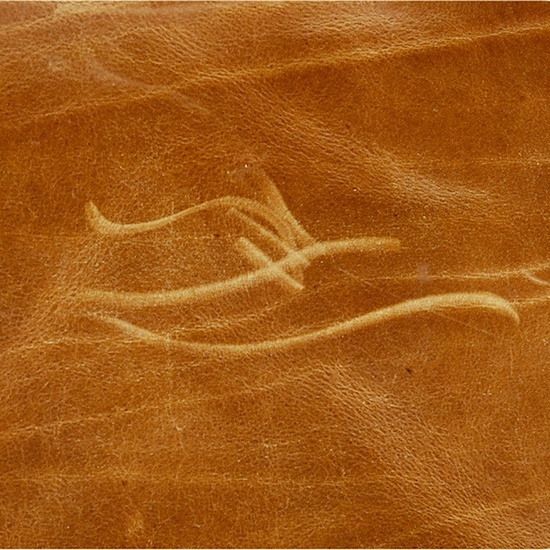
Yes, yes– freaking hilarious! :/ I had ordered this leather before, and while a bit “distressed,” this batch was awful. What’s especially horrible, in this case, is that the upholsterer did call me up to warn me.
Unfortunately, I was in denial and did not heed his warning.
I called an expert for advice. He was sympathetic but said that there’s no permanent solution. Yes, rubbing with your finger helps, and a hairdryer works even better, believe it or not. But is the client supposed to blow dry her sofas every day?
This is a great site (Roden Leather) that explains all about the different types of leather. Not all leather is durable. In fact, most are no more durable than fine silk.
The solution was to make some beautiful slipcovers out of Donghia Sunbrella.
This cost me a pretty penny, but they looked wonderful. I added a short skirt. Wish I had a photo! They were very small loveseats for a tiny, tiny side room standard in Westchester County that folks use as a family room.
An entire family of 5 or 6 spends most of their time in a room that’s 90 square feet. This is because the old homes in southern Westchester county do not have family rooms.
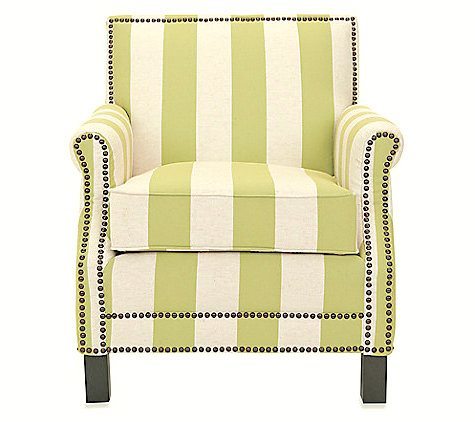
The fabric looked something like this, only more honey color than green. (Please forgive the lousy upholstery job.)
Well, those are the main fabric mistakes I’ve made or heard of.
Of course, there have been lots of other things that were caught, like flaws in the fabric. Once or twice the material arrived dirty. And yes, TWO TIMES, the WRONG fabric was sent, but it was caught before it was cut into.
Stuff happens.
We’re human; we make mistakes. We suffer the consequences. I don’t want you to suffer too much if you’re just starting your interior design career. OR, if you’re doing everything yourself.
Have you had any whopping interior fabric mistakes? Please share if you feel like it.
And, I hope this gave you some good info so that you won’t have any nasty surprises, at least not with your fabrics!
But, if you want to hear the worst thing that ever happened in my business, click here to read how I lost $30,000.00 the first year I was in business.
And, you won’t want to miss this post about my top 21 interior design mistakes you need to stop making. (well, some of you.) ;]
This post highlights some of my favorite fabrics for upholstery.
The best performance fabrics for Pets and Slobs
xo,
PS: Please check out the newly updated HOT SALES!
Related Posts
 Did You Say Enfilade? On Fill What?
Did You Say Enfilade? On Fill What?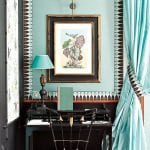 Help! I wanted Soothing Green Walls and I Got Hospital Green Instead!
Help! I wanted Soothing Green Walls and I Got Hospital Green Instead!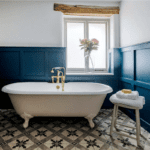 7 of the Hottest Bathroom Trends To Avoid or Embrace?
7 of the Hottest Bathroom Trends To Avoid or Embrace? Color Palettes From Nature + Springtime in Boston!
Color Palettes From Nature + Springtime in Boston! The Best Neutral Color Scheme – How To Get it Right
The Best Neutral Color Scheme – How To Get it Right Eegads! My No-Fail Paint Color Failed. What Went Wrong?
Eegads! My No-Fail Paint Color Failed. What Went Wrong? The Dreamiest Bedrooms + Where I Go For My Bed Linens
The Dreamiest Bedrooms + Where I Go For My Bed Linens






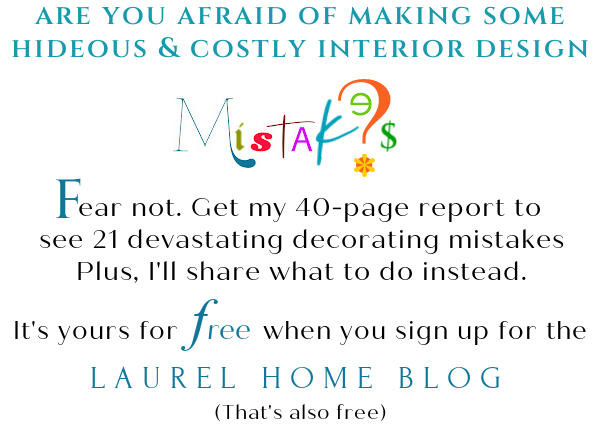




21 Responses
Laurel, I hope it’s not too late to post on this topic. Yes, I didn’t buy enough fabric and of course I cannot get more. At this point a mismatched dye lot would be a godsend. So I am playing with the idea of using more than one fabric on my sofa (which I love enough to spend the cost of two new sofas to reupholster it). My list of possible solutions: have the welting be a solid neutral color, have the boxing of the cushions be the the solid neutral, have one side of the cushion seating be the solid neutral, have the back cover of the sofa be the solid neutral… you see how I’m spiraling here. Are there any tips for how to put together two fabrics in an attractive way (no boho, shabby chic, cottage mish-mash!!)
Hi Kristine,
Yes, you could do a different fabric for the welting. If the sofa is against the wall, you could do a different fabric for the back.
Unfortunately, I don’t know if this is for upholstery or a manufacturer. They generally ask for more than they really need. Sometimes it’s because of a pattern match. If it’s a solid fabric, that’s not an issue.
Also, could you use the fabric for something else? Or, just bite the bullet and start over. If in your heart, you know you’re not going to be happy with the result, then that might be the best solution.
Wish I knew of your trip to Chicago. I could of given you lots of tips…I have lived here all my life…and had my wedding reception in the Wrigley Building.
Hi Laurel, What would be the best way to study interior decorating to learn enough of the basics to improve my own home? Would you recommend a certain school or program? I do read and look at decorators but I feel I’m not great at scale, and other basics.
thank you
Oh my goodness, Laurel…this is all so true! Hilarious…well…not then, but it is now.
Ok…so mine was the first ever bathroom I designed. It was beautiful…on paper. The installation commenced. Everything was just perfect. There was a beautiful dark slate on the floor and a sea of hand made white subway that went around the shower and 36″ up the wall all around the bathroom. Just above that there was an accent of that same slate that was on the floor, with a lovely ogee pencil rail on top. The only problem (you’ve probably figured it out already) is that the slate accent was about 1/4″ thicker than the subway tile. My fastidious installer finished the whole thing before bringing it to my attention. Needless to say, I spent the next 2 weeks trying to find a replacement once we popped out that little tile. It’s next to impossible to find a tile to fit into an already installed opening. We made it beautiful in the end, but oh what a lesson learned.
I love that you share your mishaps along the way. Things happen…some more expensive than others, but fortunately most things can be fixed.
Laurel, how exciting to read that you are visiting the town I live in! Very excited to hear that! I enjoy your stories. Welcome to Cedarburg!
“Please look at me when I’m talking to you!” made me laugh. A throw back from your mommy years.
Nothing like horror stories to keep you up at night! I’ve had some scares, but nothing overwhelmingly costly (thank gawd). I think the worst was a plant that peed on new carpet when I was staging with live plants. Thankfully we were able to have them insert a segment and the seams were invisible. And then there was the time I was styling a bookshelf and a heavy object fell and dented the laptop on the desk below. Eeek. Everything else has been a string of embarrassing and uncomfortable moments.
Most fabrics are 36″ or 45″ wide. It is true that wools especially are in the 55″-60″ range, and upholstery fabric is usually 60″. I have seen silk which was obviously sold for upholstery at 45″ wide quite a bit. If it is a pattern, matching it is more difficult.
Design schools not teaching you about the various widths of fabrics seems like malpractice. It would only take a sentence or two, properly emphasized, to let students know that they should not assume a fabric sample is from at 60″ bolt.
— Signed,
Daughter of a professional seamstress who took me to fabric stores when I was just a toddler. Mom told me I always found the most expensive fabric by touch even at that early age! My champagne taste persists to this day, but I find clever ways to satisfy it.
Hi Ramona,
Fabric for draperies and upholstery is most commonly 54″ wide. The fabric you’re talking about is dressmaker fabric.
What stories Laurel, we all have them
Mine was a client who wanted the moon, made wild accusations, very mean to the workers, even stepping over one working pin the floor and hissing how he was in her way….. initially I thought she was so sweet, and looked like Snow White, so exciting!
when all was done, she refused to pay the large balance, stating “you did everything wrong, I’m not paying you, and remember I am an attorney”.
uggghhh!
that however made me so angry, I should have added on an aggregation fee.
Found out this was her way of doing biz, and had duped many contractors. Let the battle begin! gathering my evidence, I went to the bar association and filed a complaint. I was paid immediately, after 18 years, this still irks me!
Wow! I do sew and have done some small upholstery jobs. I love fabric and understand (from a few mistakes) the importance of the right fab for the job. I have learned to keep the seating simple and add “expensive/finicky” fab for pillows or covers. Saves on the “oh no” moments. LOVE your articles!
Hi Laurel,
Stories like yours scare me. I can’t imagine being a new designer and running into these types of things.
My only fabric mistake came from doing my own sewing. I was making a couple of throw pillows out of fabric I bought at Joann’s. It was a geometric print. But the design was printed at a slight angle. It looked very weird. Fortunately it wasn’t a big investment. But it’s made me aware of what can happen when the design is printed onto a bolt of fabric.
I have been sewing for over 55 years and am always gob-smacked at the cost of drapery and upholstery fabric. Do people really pay $300-500 for a pillow and tens of thousands for drapes? I guess they must. I am happy that drapes and slipcovers and pillow construction are well-paid, however. It is the one area of sewing where the amount of work involved is recognized and compensated. I have made drapes for my home and it is not pleasurable sewing. Hauling around yards and yards of heavy cloth from sewing machine to pinning board is difficult and physically exhausting. When I see two story draped windows or theatre curtains I sigh in relief that I didn’t have to make them or hang them.
This post is a real gem. It does not surprise me interior design schools do not teach about the “RW”, “real world”. There is much to know about textiles, their application and wear, as well as the cost of running a business. Over the years I have made drapes, duvets, a bit of upholstery, etc. but never wanted to do so as a full-time business. You have described many reasons why. Also, decorator fabric is quite expensive and I never wanted to pay for my mistakes and I knew there would be some. Those I did work for never wanted to pay me what a “professional” would be paid because I was just a homemaker with fairly decent skills. All this to say, I dabble in interior design in my own home and I leave it at that.
P.S. Years ago I lived next to a Payne Fabric workroom. Payne had an outlet store as well as yearly garage sale. Those were the days of beautiful decorator fabric at a fraction of the cost.
Well,I’m not sure this is a mistake, but maybe a heads up for some. I have linen draperies in my living room that are lined. I also have roller shades on that window. It is west facing and gets afternoon sun in CA. As the sun heats up that wall, the draperies shrink! And as it cools they return to the floor.I’m fine with it but a client may not be.
I once sent a sectional out to be upholstered and part of the fabric was upside down! Luckily on the bottom and not really visable to most, but I also do upholstery (for myself…not a business) and you would think someone in business would know better.
I ordered 2 club chairs from EA with a small diamond quilting. When delivered the quilting was flawed. Having worked in fabric for years, I knew that a needle in the process had a burr on it and caught and pulled each time it entered the fabric. Little bumps all over. I complained and had reps come out to see the chairs. They brought with them the sample of the fabric. Only thing was it was a different color. They told me it was due to my cat. I said over every square inch? They said they would take them back with a $1000. restocking fee. Beware quilted fabric and EA. jd
Such a timely post for me! We moved to a new house in a new state. In the past, I have asked retail establishments for referrals for people to do work for me – i.e., I ask the painting & decorating store for recommendations of good painters.
So, when the part owner of a really nice decorating store in town recommended an upholsterer, I contacted that upholsterer and gave her two jobs to do – both involving making loose cushions. They came out looking like a first-time home economics project. By the student that got a “D” in the class.
I went back to the store where I purchased the fabric – they were recommended to me by the interior designer at the furniture store where I purchased our new furniture. I brought the cushions with me. We agreed that the work as done could not be salvaged, and that I needed to start all over.
One of the fabrics was still in stock, so I purchased it. The bolt of the other fabric – critical to the design of the room – had all been sold. Fortunately for me, the fabric store was willing to purchase a new bolt of that fabric, and the fabric is manufactured in North Carolina, not abroad. This means that the fabric should be available in 4-6 weeks, not 6 or more months! (Hopefully the dye lot will be as pretty as the original.)
So at least I am able to repurchase the fabric – at my expensive, of course!
The fabric store people also highly recommended an upholsterer that has been in business for a very long time – they referred to him as a “perfectionist”. I called him to “get in line” to have my project done. He is booked until September, but I am willing to wait to have the project done properly. He has asked me for some specific information to determine if I have purchased enough fabric and to determine the cost of the project. I seem to be in much better hands this time around!
This business is not for the faint of heart or those who are not resourceful! I’ve made some of the same mistakes too in 25 years (and does it ever hurt the pocketbook) but I have had some good ‘saves’ too. The ‘not paying enough attention to the fabric repeat and then when you go to re-order it’s discontinued’ was a real disaster (of course the whole room revolved around that fabric) until I went to one of the ‘closeout fabric stores’ and found the end of the bolt, all that I needed to finish, at half price! And the dyelot matched! I try to remember the times disasters ended well…..
I had a client who did NOT want the fabric on the seats of her eight upholstered McGuire dining chairs to pattern match 🤔 We had selected a beautiful large (like 8” repeat) fleur de lis batik pattern on canvas. She had mentioned this in the showroom when we selected the chairs. I explained to her how it would look more like a mistake and left it at that thinking she understood. Of course, the upholsterer did match them like a good upholsterer would. She complained but luckily got over it.
Oh my gosh, Laurel, no wonder you left the business! I have to say that in the 20-plus years I’ve been doing this, I never had a disaster like any of these. I think that if you’re really busy and have lots of clients at the same time you can lose sight of the details. I’ve never been that busy (for better or for worse!) and am extremely neurotic whenever I order anything. I check and double-check over and over and over and over.
I’m a bit confused about the leather, though. I would think the client’s children scratching the leather would not be on the designer, but (as one of my contractors used to say) “homeowner abuse.”
But even though I never had a fabric disaster, I did have a case where two benches were ordered and I mis-measured. When they arrived they were WAAAYYYY big for the space. Lucky for me, Kravet took them back and I re-ordered smaller ones. And they did not charge me. I actually think they are an amazing company
But I agree that this business is not for the faint of heart. It’s rewarding when you see the final product, but getting there can be nerve-wracking, and certainly not “fun.”